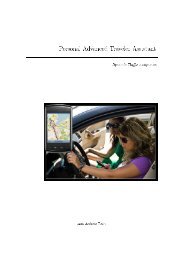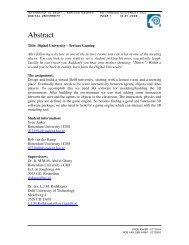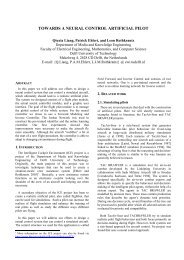Recognition of facial expressions - Knowledge Based Systems ...
Recognition of facial expressions - Knowledge Based Systems ...
Recognition of facial expressions - Knowledge Based Systems ...
Create successful ePaper yourself
Turn your PDF publications into a flip-book with our unique Google optimized e-Paper software.
performing classification <strong>of</strong> <strong>facial</strong> <strong>expressions</strong>, based on the images received from the<br />
first application. The reasoning application was designed as a server-side application. The<br />
connectivity among the present components is as it is presented in the figure.<br />
Figure 20. The design <strong>of</strong> the system<br />
The two applications send data to each-other through a TCP/IP connection. The media<br />
client acts like a bridge between the capturing device and the emotion classification<br />
application. It only sends captured images to the other side <strong>of</strong> the network. The server<br />
application can send back parameters concerning the rate <strong>of</strong> capturing, the frame size or<br />
parameters related to the image, as the contrast, brightness, etc.<br />
The server application receives the images, one after another and put them on a<br />
processing queue. A thread is assumed to take the first image in the queue and to pass it<br />
to a sequence <strong>of</strong> processing modules. The first module is that <strong>of</strong> eye location recovery.<br />
<strong>Based</strong> on the detection result, the positions <strong>of</strong> all the other <strong>facial</strong> characteristic points are<br />
extracted. The next module is that <strong>of</strong> computing the values <strong>of</strong> some parameters according<br />
to the used model for recognition. The procedure implies analyzes <strong>of</strong> distances and angles<br />
among given <strong>facial</strong> characteristic points. The actual recognition module consists in a<br />
Bayesian Belief Network that already contains the proper values for all the associated<br />
probability tables for the nodes. The reasoning is done by setting as evidence the states<br />
for all the model parameters according to the discretization algorithm and by computing<br />
the anterior probabilities for the parent parameters. The parameter that encodes the<br />
Expression node contains six distinct states, one for each basic emotion class. By<br />
- 81 -
















